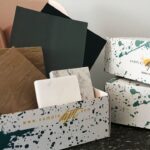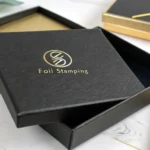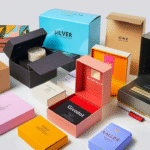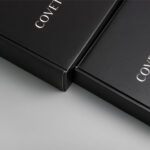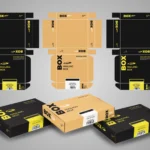In today’s competitive market, high-quality printing plays a crucial role in making your brand stand out. Whether you’re designing eye-catching custom packaging boxes, promotional materials, or product labels, understanding the fundamentals of printing is essential. One of the most important concepts in the printing industry is CMYK. This guide will explore what CMYK is, how it applies to custom printing and cardboard packaging, and why it’s vital for creating vibrant, professional-looking custom packaging boxes.
What is CMYK? An Introduction
CMYK stands for Cyan, Magenta, Yellow, and Key (Black). It is a color model used predominantly in color printing. Unlike digital screens that use RGB (Red, Green, Blue), the CMYK model is subtractive, meaning it absorbs light to produce colors. When combined in various proportions, these four colors can create a broad spectrum of hues, making it the standard for high-quality print production, especially for custom printing on cardboard packaging.
The Origin of CMYK
The CMYK color model has evolved from earlier printing processes, designed to reproduce photographs, artwork, and designs with high fidelity. Its subtractive nature allows printers to produce vivid, accurate colors on physical materials like paper and cardboard.
Understanding the CMYK Color Model
How Does CMYK Work?
In the CMYK process, each color component (Cyan, Magenta, Yellow, and Black) is applied as a thin layer of ink on the surface of the material. The inks are layered in varying degrees to produce the desired color.
- Cyan absorbs red light and reflects blue and green.
- Magenta absorbs green light and reflects red and blue.
- Yellow absorbs blue light and reflects red and green.
- Black (Key) enhances depth, contrast, and detail, and is more cost-effective than mixing cyan, magenta, and yellow to produce black.
Color Mixing in CMYK
When printing, tiny dots of these colors are overlaid in a process called halftoning. Our eyes blend these dots from a distance, creating smooth color transitions and realistic images.
The Color Spectrum
The CMYK model can produce approximately 16 million colors, which is sufficient for most printing needs. However, some colors, especially very bright or fluorescent shades, are difficult to reproduce accurately with CMYK alone.
The Role of CMYK in Custom Printing
Custom printing involves creating personalized designs on various materials, notably cardboard packaging. Whether for retail packaging, promotional boxes, or product containers, the choice of color model directly impacts the final appearance.
Why CMYK is the Standard in Commercial Printing
- Color Consistency: Ensures reliable reproduction of colors across different print runs.
- Cost-Effectiveness: Using four inks reduces the need for multiple color plates.
- Versatility: Suitable for printing on a variety of substrates, including cardboard, paper, and other packaging materials.
- High-Quality Output: Capable of producing detailed and vibrant designs necessary for custom packaging.
Application in Custom Packaging Boxes
Custom packaging boxes crafted by companies like Packwhole leverage CMYK printing to produce intricate logos, branding elements, and promotional graphics. This method allows brands to create distinctive packaging that captures consumer attention and enhances brand recognition.
CMYK vs. RGB: What’s the Difference?
Understanding the difference between CMYK and RGB is vital for designers and businesses involved in custom printing.
| Aspect | CMYK | RGB |
|---|---|---|
| Color Model | Subtractive | Additive |
| Used For | Printing | Digital screens (monitors, TVs, smartphones) |
| Color Range | About 16 million colors | About 16.7 million colors |
| Primary Colors | Cyan, Magenta, Yellow, Black | Red, Green, Blue |
| Purpose | Producing physical printed materials | Displaying images digitally |
Important: Always convert your digital files from RGB to CMYK before printing to ensure color accuracy, especially for custom packaging boxes and cardboard packaging.
Why CMYK is Essential for Cardboard Packaging
Cardboard packaging is often the first physical contact a customer has with a product, making its visual appeal critical. Using CMYK in designing and printing custom packaging boxes offers numerous benefits:
1. Vibrant, Professional Appearance
CMYK printing ensures bright, sharp images and text, making your packaging stand out on retail shelves.
2. High-Resolution Detail
Fine details, logos, and intricate patterns are accurately reproduced, essential for branding.
3. Cost-Effective for Large Runs
Since CMYK uses only four inks, it allows for economical mass production of custom packaging boxes without sacrificing quality.
4. Compatibility with Various Substrates
CMYK printing adapts well to cardboard packaging, which is widely used for retail, shipping, and promotional purposes.
5. Consistent Color Reproduction
Ensures your brand colors remain uniform across different batches, maintaining brand integrity.
How CMYK Affects the Quality of Custom Packaging Boxes
The quality of custom packaging boxes depends heavily on the printing process. Here’s how CMYK influences the final product:
Color Accuracy and Branding
Accurate color reproduction is crucial for brand consistency. CMYK allows designers to match Pantone colors or create custom shades that align with branding guidelines.
Sharpness and Clarity
High-resolution CMYK printing produces crisp images, making logos and graphics clear and eye-catching.
Durability of Print
When combined with quality inks and printing techniques, CMYK printing on cardboard packaging results in durable, long-lasting images resistant to smudging and fading.
Flexibility in Design
With CMYK, designers can experiment with complex gradients, photorealistic images, and detailed artwork, offering endless creative possibilities for custom packaging boxes.
Best Practices for Using CMYK in Custom Printing
To maximize the benefits of CMYK for your custom packaging, consider these best practices:
1. Design in CMYK Color Mode
Always create or convert your design files to CMYK color mode to ensure accurate color output.
2. Use Color Profiles
Employ standardized color profiles (such as ISO Coated v2) to maintain consistency across different printing setups.
3. Avoid Overly Bright Colors
Some vibrant colors, especially neon or metallic shades, are difficult to reproduce accurately in CMYK and may require special inks or finishes.
4. Test Prints
Request sample prints or proofs before the full run to verify color accuracy and quality.
5. Maintain High Resolution
Design at a minimum of 300 DPI (dots per inch) to ensure sharp, professional-quality images on your custom packaging boxes.
Choosing the Right Printing Method for Cardboard Packaging
While CMYK is a popular choice for custom printing, selecting the appropriate printing technique depends on your project’s requirements:
- Digital Printing: Ideal for short runs, quick turnaround, and complex designs in custom packaging boxes.
- Offset Printing: Suitable for large quantities with consistent color quality, especially when precise color matching is necessary.
- Flexography: Often used for high-volume packaging, including cardboard packaging, with good color fidelity.
- Screen Printing: Best for simple designs and specific effects, though less common for complex custom packaging boxes.
Packwhole offers expert guidance to help you choose the best printing method aligned with your branding and budget goals.
Packwhole: Your Expert in Custom Packaging Solutions
At Packwhole, we understand the significance of high-quality custom printing for your cardboard packaging needs. Our services include:
- State-of-the-art CMYK printing technology ensuring vibrant, precise colors.
- Custom-designed packaging boxes tailored to your branding specifications.
- Eco-friendly materials and sustainable printing practices.
- Fast turnaround times and competitive pricing for bulk orders.
- Expert consultation to help you select the best printing techniques and finishes.
Our goal is to help your brand stand out with premium custom packaging boxes that not only protect your products but also leave a lasting impression.
Conclusion: Making the Most of CMYK for Your Packaging Needs
Understanding CMYK is fundamental for achieving high-quality, vibrant custom printing on cardboard packaging. By leveraging this color model, brands can produce eye-catching custom packaging boxes that elevate their product presentation, reinforce brand identity, and appeal to consumers.
Whether you’re designing minimalist packaging or intricate artwork, mastering the principles of CMYK ensures your printed materials look professional and consistent across all batches. Partnering with experienced printing providers like Packwhole guarantees access to advanced printing technologies and expert advice, making your packaging project a success.
Invest in CMYK printing, and watch your custom packaging boxes transform into powerful marketing tools that captivate your audience and boost your brand’s visibility.

